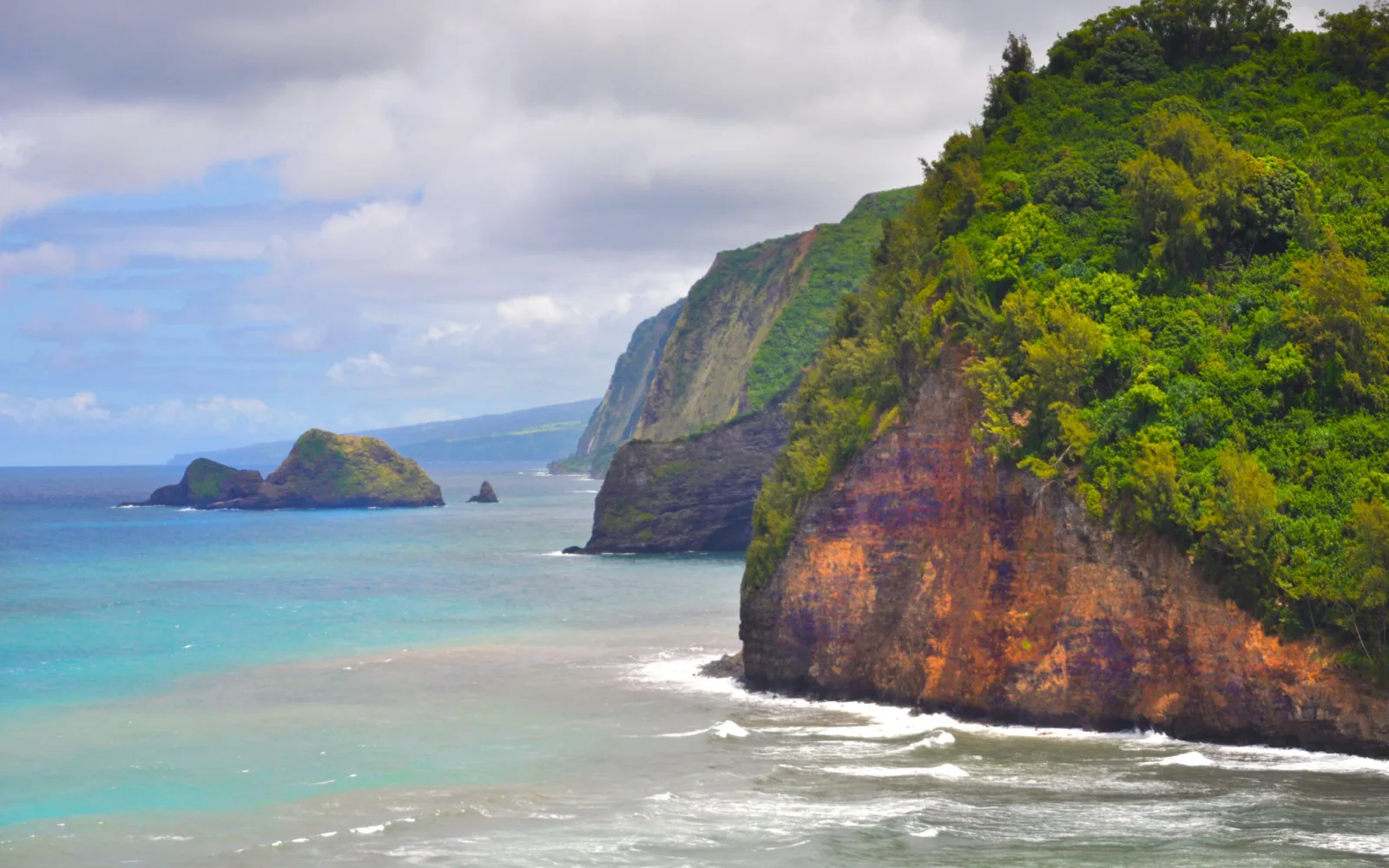Is the Big Island safe to visit in 2025?
The Big Island in Hawaii may not be Hawaii’s most popular tourist destination, but it is the best place for visitors looking for a trip exploring the beauty of nature. The Big Island, also known as the island of Hawaii, receives about 40,000 visitors per month.
Nature is the primary draw of visiting this tropical paradise. Visitors can hike through otherworldly landscapes in Volcano National Park, getting up close and personal with active volcanoes.
Other gorgeous natural spots include Rainbow Falls Natural Park and the Waipio Valley Overlook. Learn about traditional Hawaiian culture by visiting Pu’uhonua o Honaunau Hawaiian Historical Park (the island is full of indigenous culture).
Of course, coffee lovers will want to visit the farms of Kona (coffee from this region happens to be my favorite). There is so much to see and do that you have to spend time here if you are visiting Hawaii.
However, before planning any trip, it is a good idea to research the safety of your destination. But don’t worry — our travel experts have done the hard work for you.
We’ve put together this extensive travel guide to help you figure out how to visit the Big Island safely. Keep reading to ensure your vacation will be as safe as can be!
Is the Big Island Safe to Visit in 2025?
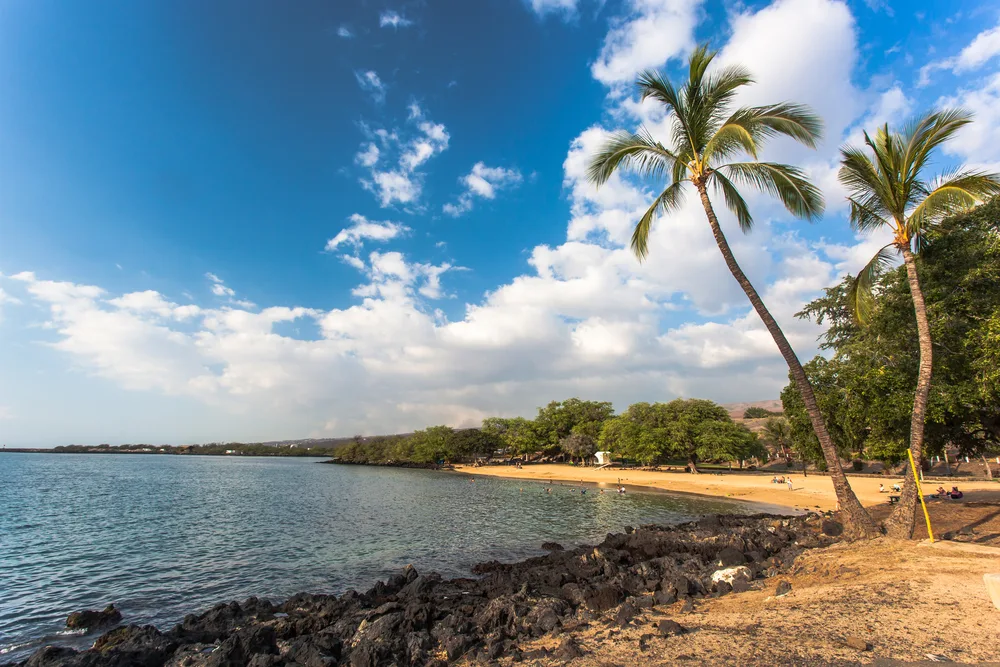
Radoslaw Lecyk/Shutterstock
The Big Island in Hawaii is very safe to visit. Although you might encounter some petty crime such as pickpocketing or theft from vehicles, overall the crime rate is fairly low.
You should be concerned about natural disasters such as volcanic eruptions, but the right precautions can protect you. Like any place, the Big Island experiences crime.
Most crimes are petty in nature, such as:
- Pickpocketing
- Bag snatching
- Theft of unattended items
- Theft from vehicles
- Gas siphoning
- Scams
Tourists are often targeted for theft. Tourists are perceived as potentially lucrative victims who lack the street smarts of locals. Plus, there is resentment among some locals towards tourists because overtourism is harming Hawaii.
The Big Island has not received as much of the damage as places such as Maui, but the danger is present and the resentment leads some criminals to target tourists.
However, the crime rate in Hawaii overall is fairly low. It is lower on the Big Island than in several other islands because this island is more sparsely populated and receives fewer tourists.
Natural disasters are a more common problem you should worry about on the Big Island. The Big Island has several active volcanoes that are popular tourist attractions. However, they can erupt at any point, affecting the lives of those who live nearby or happen to be visiting.
For example, the volcano Mauna Loa erupted in November 2022. People were concerned as Mauna Loa’s lava flows are fast-moving and unpredictable, but the eruption passed with minimal damage.
Besides lava, there is the danger from ash, vog (volcanic fog), and Pele’s hair, all airborne substances that are dangerous for people with respiratory conditions.
Locals said that the volcanic island was still safe to visit during the eruption as long as visitors took the right precautions.
Usually, most volcanic eruptions on the Big Island are not devastating, but it is a good idea to stay on parts of the island further away from eruptions when there is an ongoing volcanic event.
To take precautions regarding volcanic eruptions, check useful websites such as the USGS website, a page from the U.S. government with real-time updates on ongoing volcanic eruptions.
The County of Hawaii also has a civil defense page with ongoing alerts and advice on safety procedures. Volcanoes are not the only natural disasters that you have to worry about on the Big Island.
The Big Island also experiences hurricanes, tsunamis, tropical storms, and flooding. Always follow weather updates, especially if you are going hiking. You don’t want to get caught in a flooded area while you’re out and about.
Natural disasters are not the only time you have to be careful when out and about in Hawaii’s nature. The Big Island has many beaches, but be careful as the ocean around it has powerful currents, tides, and waves.
People have drowned or been seriously injured on the island. Follow the advice of lifeguards and keep your skill level in mind when swimming.
Crime on the Big Island
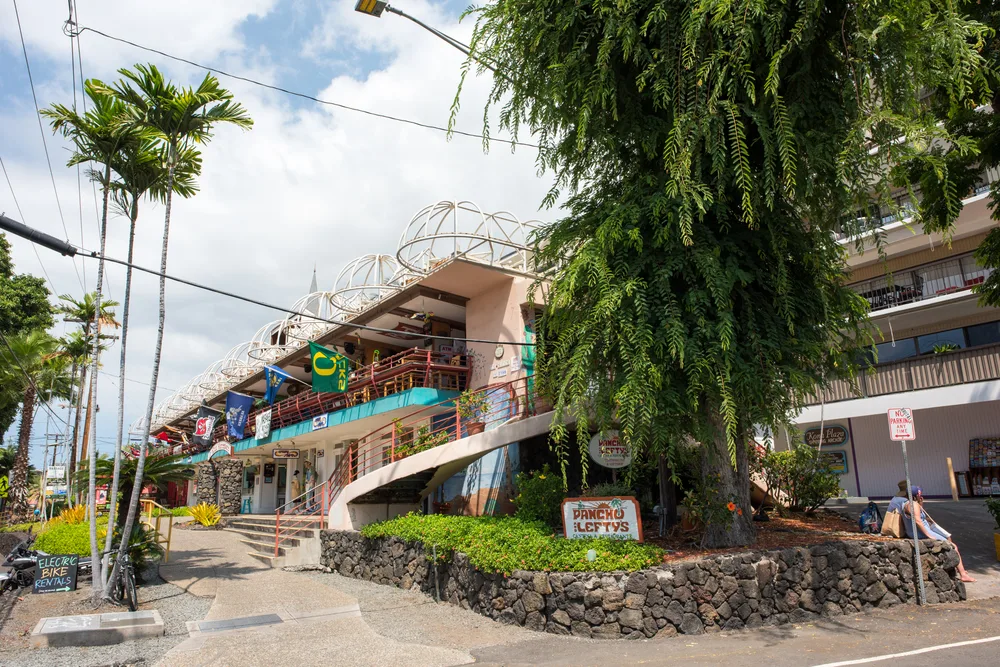
Coconut palm trees lean out over the water and black volcanic rock below a blue sky for a piece on whether or not the Big Island is safe to visit/Michael Gordon/Shutterstock
Natural disasters may be more dangerous, but crime is more likely when you travel to the Big Island. It’s a good idea to get a feeling for crime statistics before you go.
The Hawaii government publishes crime statistics for Hawaii County, which is the county that makes up the island of Hawaii. The most recently available data is from the year 2020.
Crime statistics for 2020 were slightly alarming. Hawaii County saw a 67.9% increase in violent crime, including increases in murder, rape, robbery, and aggravated assault.
Before you get frightened about visiting because of this increase in violent crime, it’s important to put it in perspective. From 2020 to 2023, violent crime increased across the nation, often as a result of pandemic-related social factors.
Despite the increase in violent crime compared to previous years, the state of Hawaii overall has a much lower violent crime rate than the national average.
The Big Island has a lower crime rate than other Hawaiian counties, making it a place with a lower violent crime rate than the rest of the United States. There were also increases in certain types of property crimes.
There was a 26.4% increase in motor vehicle theft and a whopping 610% increase in arson. However, property crime overall decreased by about 4%.
Despite the increase in violent crime, violent crime still makes up only 13% of the total crime incidences, while the rest are all property crimes. The most common violent crime is aggravated assault, which makes up 70% of reported violent crime statistics.
Most incidents of violent crime involve locals, not tourists. The most common property crime is larceny theft, which makes up 58% of total reported crime on the Big Island.
Larceny theft is a broad category that includes a few different types of theft, including pickpocketing, theft of unattended items, and theft from stores. Theft has been steadily decreasing on the island over the past few years, although it is still present.
What do these crime statistics tell us? The Big Island may look like paradise, but it has its problems.
You should be careful and take basic precautions against crime when you are in town. However, the crime rate is low enough that you don’t have to be on your guard constantly.
Petty Theft
As with almost any other tourist destination, the most common crime you will encounter when visiting the Big Island is petty theft. Common forms of petty theft include pickpocketing, bag snatching, and theft of unattended items.
Most thieves on the Big Island are not hardened criminals, but people that simply see an opportunity and take it. Basic precautions are usually enough to keep you safe.
The most common form of theft on the Big Island is theft of unattended items. An extremely easy precaution to take is to not leave your items unattended.
Many people get taken in by the laid-back atmosphere and forget basic precautions, exposing themselves to theft. Never leave valuables unattended, even in hotel lobbies, restaurants, or the beach.
Pickpocketing and other forms of street crime can happen in more crowded areas such as Hilo and Kailua-Kona.
Make sure that you have a firm grasp on your valuables at all times. The fashion on the island is fairly laid-back, so don’t stand out by wearing designer clothes or expensive jewelry.
Theft From Vehicles
Vehicle-related crimes are common throughout the Big Island. Criminals often target rental cars as they know tourists are more likely to have their things with them and have less street smarts.
The unfortunate reality is that renting a car is the best way to see the island, so you are potentially exposing yourself to this crime. The best precaution to prevent theft from vehicles is to never, ever leave possessions in your car, especially not valuables.
Avoid driving around with your luggage if you can — check into your accommodation, then go exploring. If you go hiking, don’t leave your phone or wallet in the car.
Don’t leave any items, such as phone chargers or loose change, visible in the car as those are targets for thieves. Choose your parking spots wisely, especially if you have things in your car.
Stick to well-lit areas with plenty of people around as crowds tend to deter thieves. When you park, avoid rummaging around in your trunk or any actions that show people that you have things to steal.
Local advice for parking your car seems counterintuitive.
Locals and guidebooks tell tourists to leave their doors unlocked when parking their cars as this means that potential thieves are less likely to smash your window (of course, this then makes it more likely for someone to waltz away with your entire car).
It’s up to you if you want to follow this advice or stick to precautions that seem more like common sense, such as locking your doors.
Avoiding Bad Areas
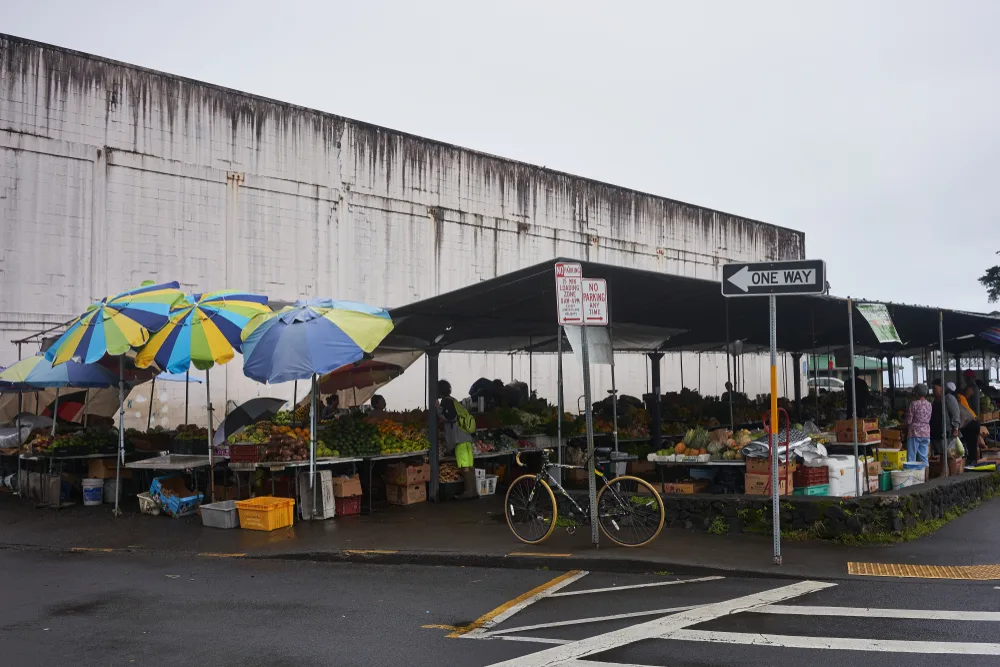
Hilo, Hawaii, USA – Dec 3, 2019: Hilo Farmers Market on the Big Island of Hawaii, selling fresh Hawaiian fruits and vegetables, tropical flowers and local crafts/Tada Images/Shutterstock
If you really want to stay safe on the Big Island, then avoiding bad areas is a helpful tip. Luckily, there aren’t any areas of the island that are necessarily dangerous, just places where crime is more likely.
The city of Hilo has a high property crime rate relative to the rest of the island. Be careful of pickpockets in the downtown area.
Avoid sketchier neighborhoods such as around Prince Kuhio Plaza. Pahoa is known as a hippie paradise, but it does have an elevated crime rate. Be careful when visiting the northwest part of town.
Things to Consider
Here are a few additional safety tips for visiting the Big Island:
- Be respectful of the island. Follow signs that don’t allow trespassing or crossing land. Don’t litter or do anything that harms nature. People on the island are (often rightly) upset at tourists and how they behave, so try to maintain positive relationships.
- Never turn your back on the ocean. Waves can hit you from behind, causing severe damage including spinal cord damage. Take advice from locals on how to swim safely (and actually listen).
- Be careful driving at night. Roads around the Big Island are very poorly lit to prevent light pollution. Pedestrians walking on the shoulder are common, as are stray feral pigs. If you’re not very comfortable driving at night, it’s probably better to avoid it.
- Treat cuts with antibacterial ointment. Due to the tropical climate of the Big Island, infections can happen more frequently than in other places. Be careful when swimming to avoid cuts on coral. Don’t enter water with open cuts to prevent infection.
Frequently Asked Questions
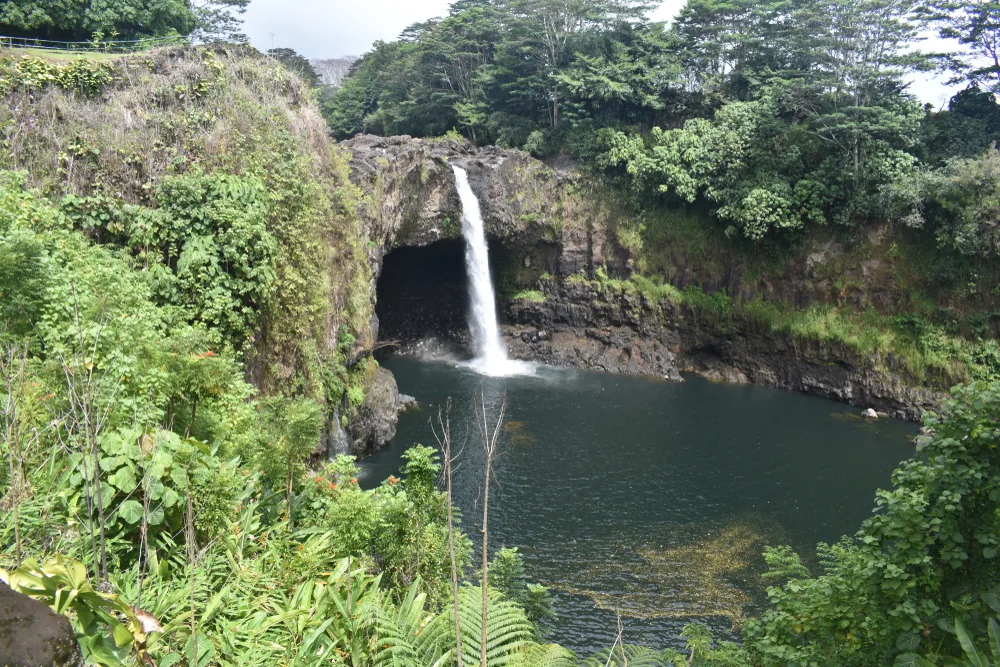
JustinG88/Shuterstock
Here are a few common questions you might want answered before planning your trip to the Big Island:
Is Big Island safe for tourists?
The Big Island is very safe for tourists. As long as you use common sense, take basic precautions against crime, and follow any advice about natural disasters, you can have a safe experience on the island.
Is the Big Island a good place to go?
The Big Island is a very good place to go, especially if you want to get a feeling for authentic Hawaii away from overdevelopment. It has nature, local culture, delicious coffee, and so much more.
Is the Big Island expensive?
The Big Island is actually much more affordable than other Hawaiian islands such as Oahu. Accommodation tends to be local guesthouses, not pricey resorts, and the price of items such as food is also lower.
Is Kona safe at night?
Most towns on the Big Island, including Kona, are safe at night. However, don’t go swimming at night as the ocean is unpredictable.
Book Your Trip to the Big Island Today!
The Big Island is a great destination for your next Hawaiian vacation. Not only does it have plenty to see and do, but it also has a low crime rate and is safe for visitors.
So, with so much to see and do, and a relatively safe atmosphere (with the right precautions, that is), what are you waiting for — book your trip and experience for yourself all that the Big Island has to offer!



